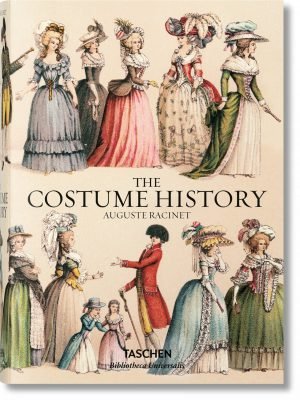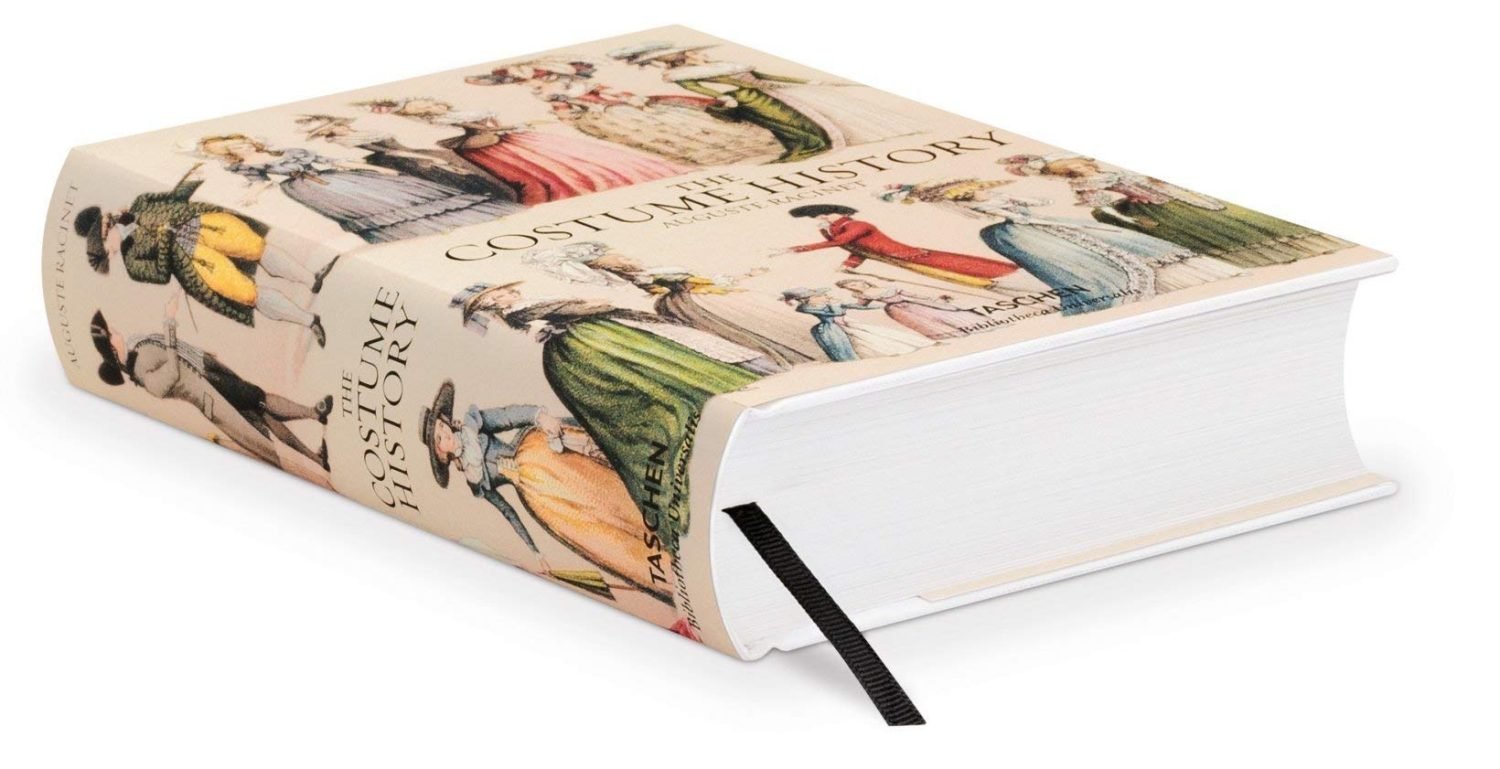
FRANCE. 18th CENTURY.
FASHION TYPES FROM THE TIME OF THE DIRECTORY. STOCK EXCHANGE SPECULATORS AND CROOKS.
1795-1797.
No. 1. The Folly of the day.
No 2. The Merveilleuses.
No 3. The meeting of the Incroyables.
No. 4. The Croyables on the Perron.
No. 1 – The foolishness of the day.
It consisted in the waltz that had just been imported from Germany. The costume worn by the ladies at this dance and other festivities sought to show off their physical charms as much as possible. The Impossibles de la nouvelle France wore their arms naked up to the shoulder. A jersey of pink silk covered the legs, and a shoe similar to the antique sandal, held by cruciate ligaments, covered the feet. Even the shirt of light-coloured linon disappeared one day. The dancer dressed “en aile de papillon” hardly has room for a bag in her nakedness. She carries the fan in her belt, the purse in her bosom. She gives the handkerchief to one of her minions for safekeeping, or she puts it into a sabre-like pouch hanging from her belt, which is given the name ridicule, corrupted from the Latin reticula.
The cavalier wears the anglicising costume of the time, the habit carré, the cravate écrouélique, the long, tight trousers with hanging ribbon bows. The short, high-buttoned waistcoat shows the fine batiste shirt at the waist.
The violinist’s head is still covered by the powdered wig.
No. 2 – The Merveilleuses in street costume.
In the exaggeration of fashion they form a counterpart to the Incroyables. Their costume is dominated by Anglomania and a predilection for antiquity. The long stole à la Flore, à la Diane, à l’Omphale ends in a train which is taken up to the belt, leaving part of the leg and the foot dressed with a pointed shoe free.
The robe of the lady to the right shows a wide border embroidered in the taste of antiquity; the breast is entwined with a long sash, the end of which flutters freely backwards. The neck and part of the chin is covered with cravate écroulique. The hat à la jockey sits with the hair tuff over the forehead, while the rest of the hair falls down freely at the back and sides. Soft, half-length gloves go down to the middle of the forearm.
The lady on the arm of the Incroyable wears a robe richly decorated with furbelows. The hair parted above the forehead is a powdered wig whose crown is decorated with a huge bow. The very low bodice leaves the greater part of the bust free, while the shoulders are wrapped in a kind of mantilla to the black tulle.
The Incroyable wears the hair “en oreilles de chien” (like shaggy dog hair). His chin is in a white muslin tie. The shirt without jabot and cuffs is only slightly visible on the chest. His short waistcoat is closed only by a button. The tight, long pants are buttoned at the front on the shin, the tips of the shaft boots are curved upwards. An extraordinarily small tricorn with a tricolour cockade covers the blond powdered hair.
No. 3 – The meeting of the Incroyables.
According to the custom of the time, they greet each other by devouring their little fingers. The strongest one, with the broad padding on his striped waistcoat, the powdered hair and the thick stick, still reminds one of Muscadin, while his friend, with the short shorn hair and the moderately struck redingote embroidered with a meander at the hem, follows more the English fashion. The giant hat worn under the arm resembles the bolivar of the restoration. This engraving, drawn Bunbiry invenit, does not bear the name Carle Vernet’s like the previous ones, but belongs to the same series as the three others.
No. 4 – The Croyables on the Perron.
The platform of the Palais-Royal served as a stock exchange for the agitators during the time of the Assignats. One of them is exchanging these worthless papers for tinkling coins, while a thief in a red cap is stealing the handkerchief of the deceived.
Since 1797, the military cut began to penetrate the bourgeois costume. So the retention of the black skirt collar, the insignia of the royalists, refers this engraving to the time before the coup d’état of 18 Fructidor in 1797.
Cf. De Goncourt, L’Histoire de la Société française pendant le Directoire. – Charles Blanc, French painters in the 19th century. Quicherat, History of costume in France.
Source: History of the costume in chronological development by Auguste Racinet. Edited by Adolf Rosenberg. Berlin 1888.








